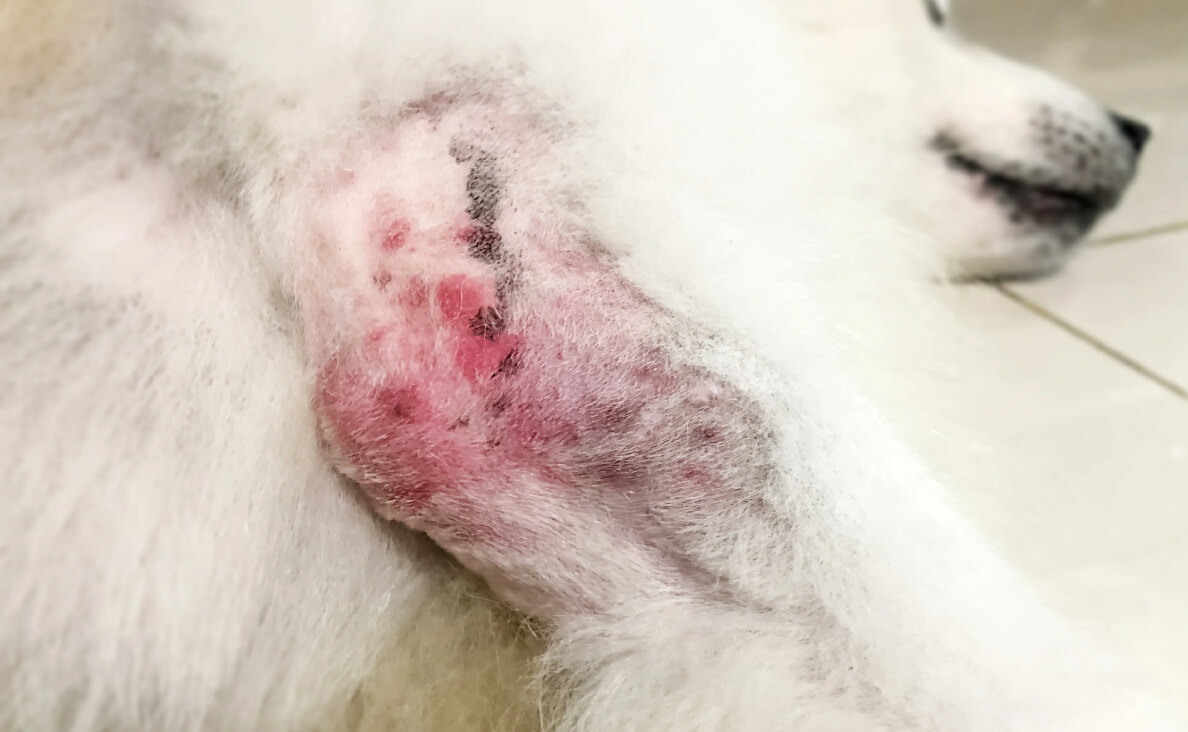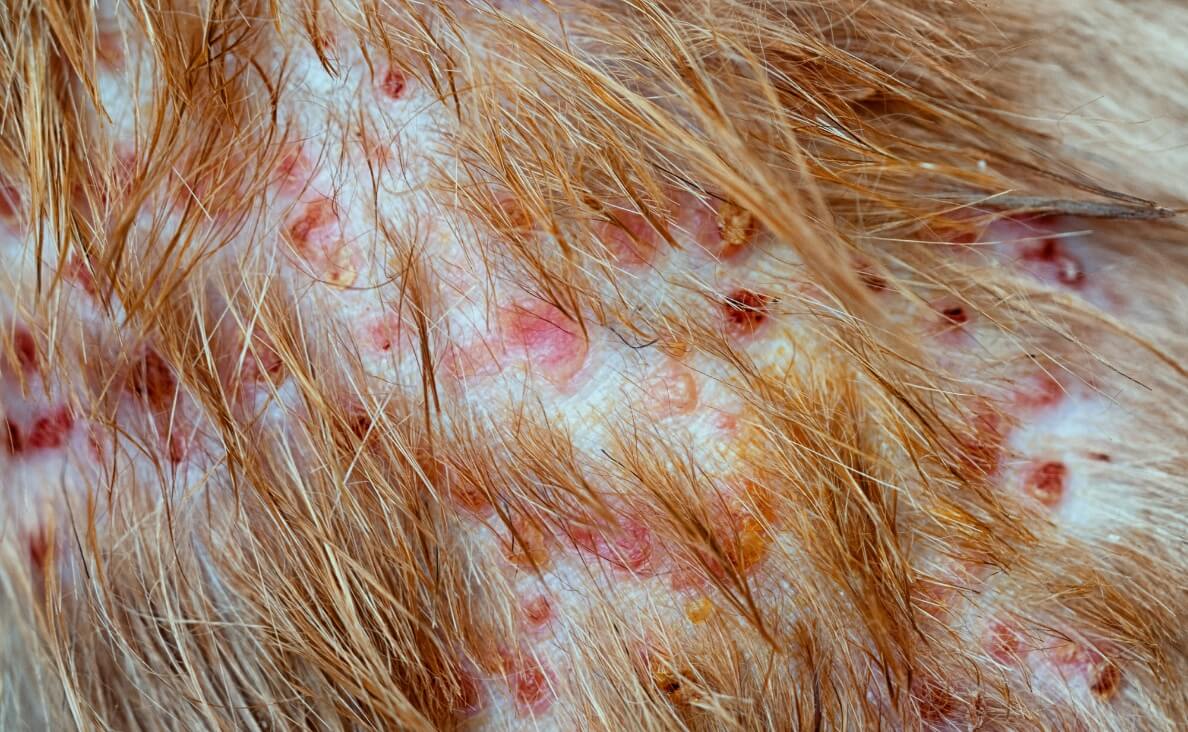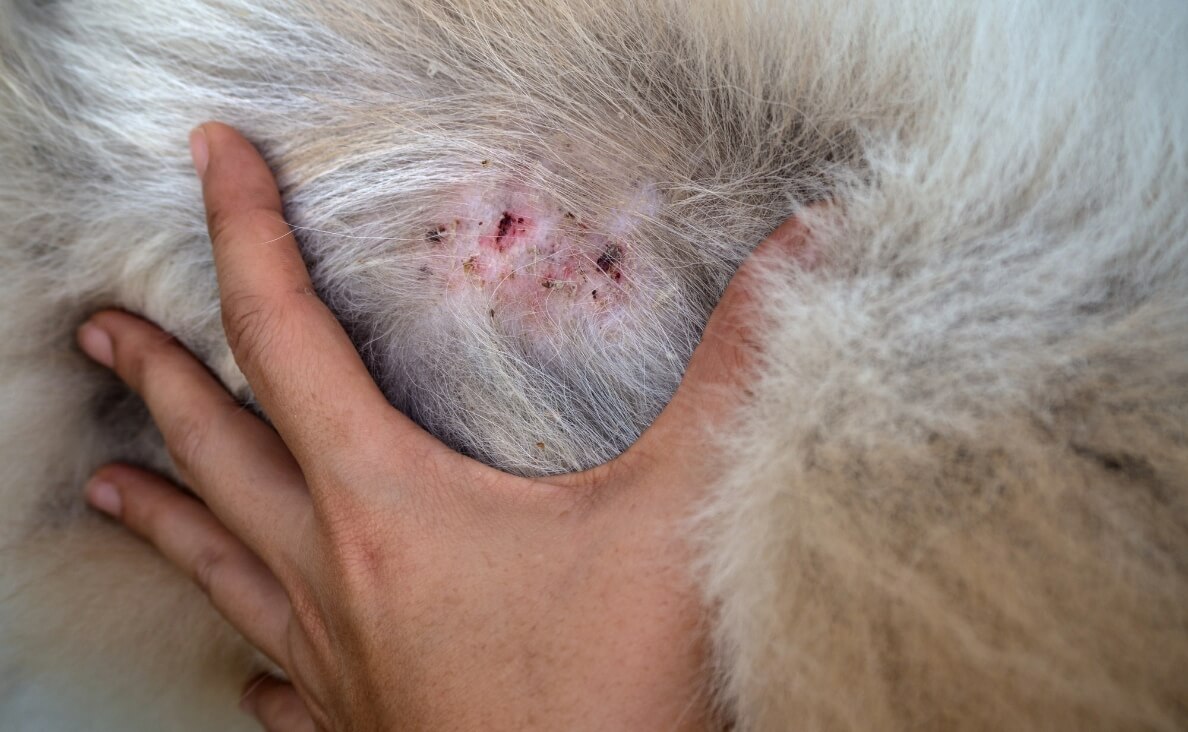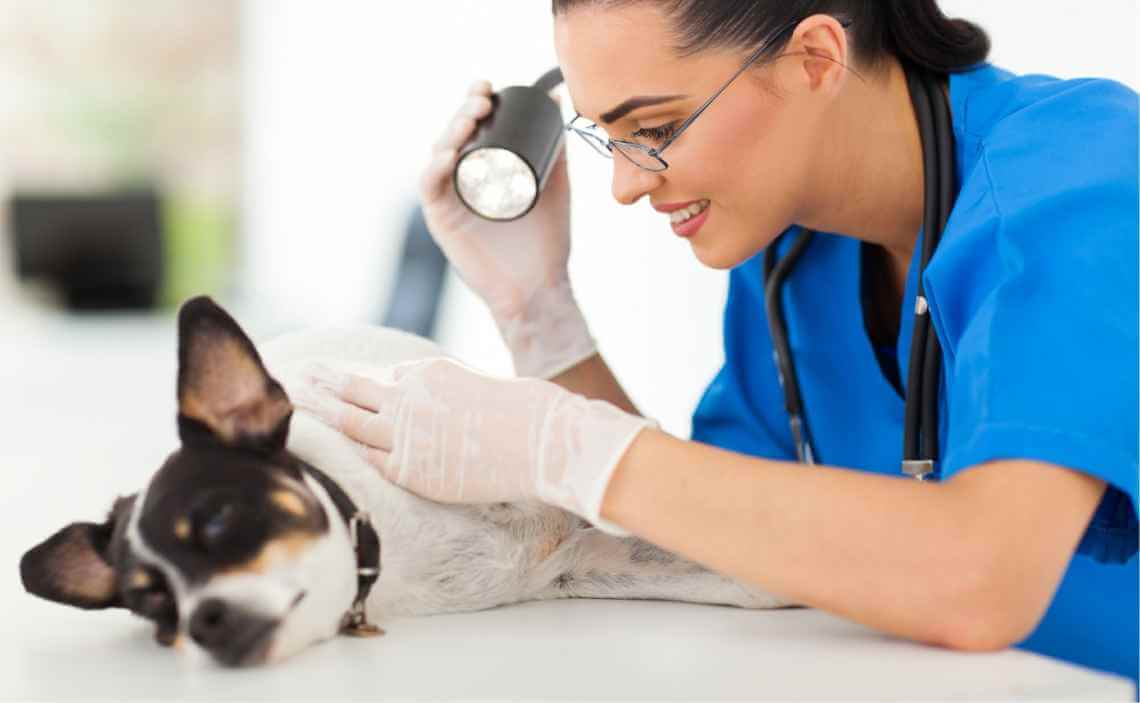
If your dog has been scratching more than usual, licking certain spots, or developing red, flaky patches on their skin, you’re not alone. Skin issues are one of the most common reasons dogs visit the vet—and one of the top culprits is a condition called canine pyoderma.
This common bacterial skin infection can affect dogs of all ages, breeds, and coat types. Thankfully, it’s treatable and, in many cases, preventable. Let’s take a closer look at what canine pyoderma is, how to recognize it, and how you can help your dog feel more comfortable and protected.
What is Canine Pyoderma?
Canine pyoderma is a bacterial infection of the skin. The term “pyoderma” literally means “pus in the skin,” but not all cases are visibly severe. It ranges from mild irritation to inflamed lesions and sores. The bacteria most often responsible is Staphylococcus pseudintermedius, which normally lives on the skin but can multiply rapidly when the skin’s protective barrier is compromised.
Canine pyoderma may be surface-level (superficial) or go deeper into hair follicles and tissue (deep pyoderma), depending on the cause and how long it goes untreated.

Signs and Symptoms of Canine Pyoderma
Every dog is different, but here are the most common signs of canine pyoderma to watch for:
- Red, itchy, or inflamed skin
- Pustules or pimple-like bumps
- Crusty or scabby skin patches
- Hair loss or thinning around infected areas
- Foul odor from the skin
- Excessive licking, chewing, or scratching
These symptoms often appear on the belly, groin, armpits, or skin folds, where moisture and friction are most likely to irritate the skin.
What Causes Canine Pyoderma?
Canine pyoderma often arises when something weakens or damages the skin barrier, allowing bacteria to enter and multiply. Common causes include:
- Allergies – Environmental, food, or flea allergies can cause chronic itching and skin damage.
- Excess moisture – Dogs with skin folds or thick undercoats are prone to trapped moisture, which fosters bacteria.
- Insect bites or trauma – A single bite or wound can open the door to infection.
- Underlying conditions – Hormonal imbalances such as hypothyroidism or Cushing’s disease often trigger recurring infections.
- Overbathing or poor grooming – Both lack of grooming and overuse of harsh shampoos can disrupt the skin’s natural defenses.
In many cases, canine pyoderma is a secondary condition, meaning something else made the skin vulnerable first.

Diagnosing Canine Pyoderma
If you suspect your dog has canine pyoderma, it’s important to visit your veterinarian. A proper diagnosis may include:
- A physical examination of the skin and coat
- Skin scrapings or tape samples to identify bacteria or yeast
- Cytology or bacterial cultures for persistent or severe cases
- Bloodwork or allergy testing if an underlying condition is suspected
Early diagnosis helps ensure the right treatment plan is started as soon as possible.
How is Canine Pyoderma Treated?
Treatment depends on the severity of the condition and whether it’s a first-time or recurring infection.
Mild to Moderate Cases:
- Medicated shampoos – Antibacterial or antifungal formulas used 2–3 times a week
- Topical sprays or ointments – Help reduce itching and clear bacteria
- Regular grooming – Essential for removing debris, reducing matting, and allowing the skin to heal
More Severe Cases:
- Oral antibiotics – Usually prescribed for 2 to 4 weeks or longer
- Anti-inflammatory medications – Reduce redness and discomfort
- Addressing the root cause – Managing allergies, parasites, or hormonal conditions
It’s important to follow your vet’s instructions closely and never use human medications on dogs, as they may worsen the infection or cause harm.

Preventing Canine Pyoderma
While not all cases can be avoided, consistent skin care and early intervention can greatly reduce your dog’s risk of canine pyoderma. Here are a few prevention tips:
- Keep your dog clean and dry, especially in humid climates or after swimming
- Brush your dog regularly to prevent matting and remove debris
- Treat allergies promptly and stay up to date on flea and tick prevention
- Feed a balanced, high-quality diet that supports skin health
- Avoid overbathing, which can strip the skin of natural oils
One of the best ways to support your dog’s skin health is with regular, professional grooming.
Related: 9 Reasons to Take Your Dog to the Groomer Regularly
Visit Canine Clippers at Canine Campus
At Canine Clippers, the grooming salon at Canine Campus, our experienced team understands how to care for dogs with sensitive or infection-prone skin. Regular grooming helps manage excess oil, keep skin folds dry, and identify early signs of canine pyoderma before it becomes a bigger issue.
We’ll work with you to create a grooming schedule that keeps your dog clean, comfortable, and healthy—whether they need regular trims, deep-skin baths, or gentle maintenance between vet treatments.

When to See a Vet
If your dog shows any of the following signs, it’s time to consult your veterinarian:
- Itching that doesn’t go away
- New or worsening skin lesions
- Foul-smelling or oozing skin
- Recurrent infections despite home care
- Signs of pain or behavioral changes
Early diagnosis and treatment of canine pyoderma not only relieves your dog’s discomfort—it can also prevent the infection from spreading or returning.
Final Thoughts
Canine pyoderma is one of the most common skin problems seen in dogs, but it doesn’t have to become a chronic issue. With the right treatment, a consistent grooming routine, and a little prevention, your dog’s skin can stay healthy, comfortable, and itch-free.
If you’re unsure where to start, talk to your vet and consider scheduling a grooming session at Canine Clippers. Your dog’s skin (and happiness!) will thank you.

We’d Love to Hear From You!
Has your dog ever experienced itchy skin or signs of canine pyoderma?
Share your story in the comments—or book a grooming session with Canine Clippers to help your pup stay fresh, clean, and protected!

 What Every Dog Owner Should Know About Probiotics for Dogs
What Every Dog Owner Should Know About Probiotics for Dogs What to Expect When Adopting a Dog With Medical Issues
What to Expect When Adopting a Dog With Medical Issues Alternative Veterinary Care Therapies for Injured or Diseased Dogs
Alternative Veterinary Care Therapies for Injured or Diseased Dogs Dog Friendly Cleaning Solutions
Dog Friendly Cleaning Solutions What Every Dog Owner Needs to Know About Canine Anemia
What Every Dog Owner Needs to Know About Canine Anemia






Leave a Reply